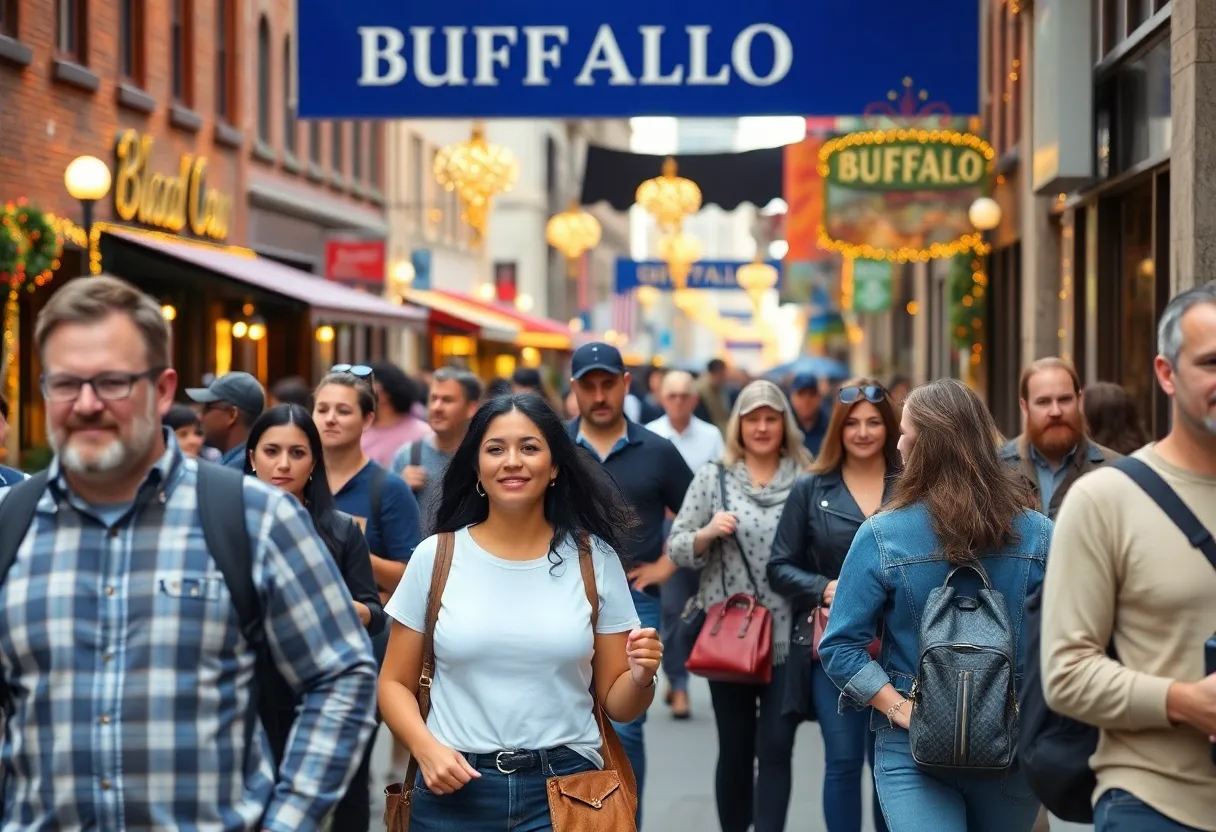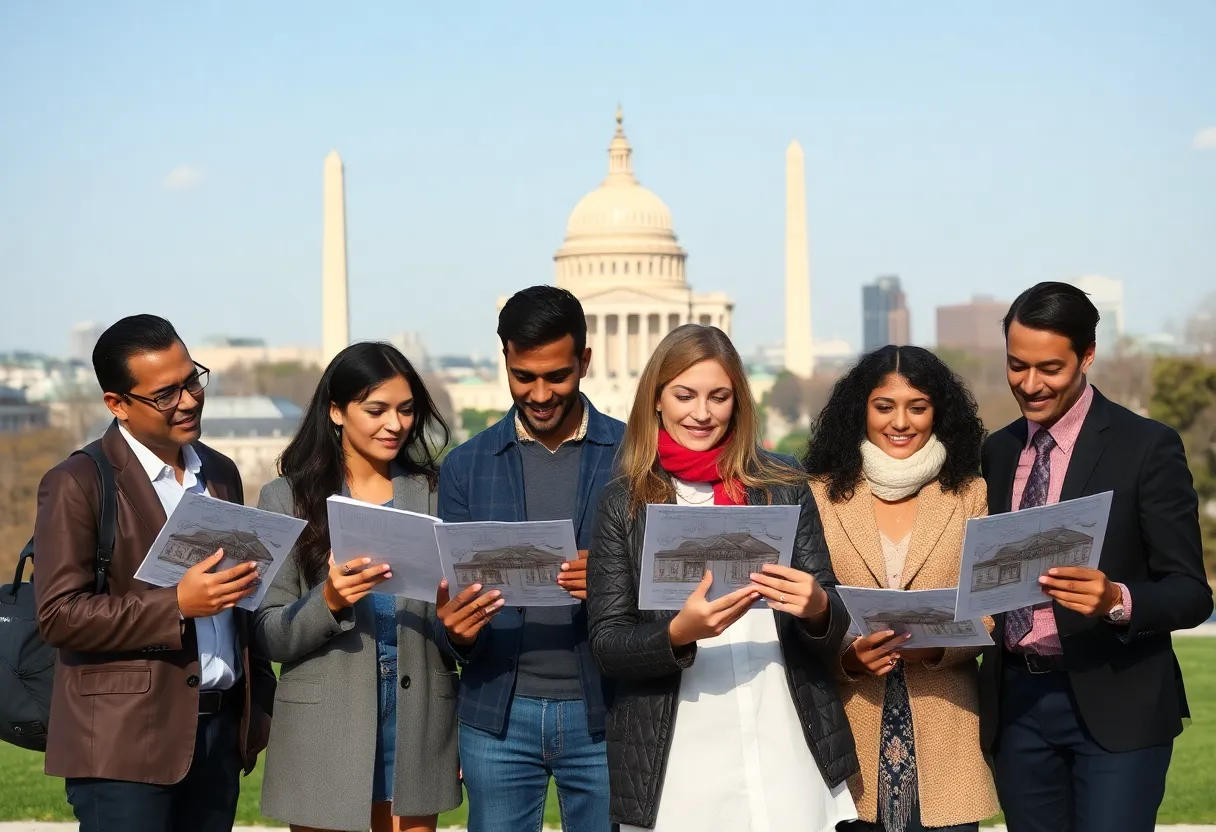News Summary
International tourism to the U.S. has significantly declined, with Buffalo experiencing a drop in Canadian visitors despite initiatives aimed at attracting them. A $500 gift card giveaway yielded limited participation, mirroring the broader trend across major U.S. cities. Projections indicate an 8.2% decrease in international arrivals this year, with notable declines among visitors from Western Europe and Asia. Local tourism demand remains strong, yet concerns persist over U.S. policies affecting foreign travelers. As Buffalo seeks to revitalize its tourism strategy, challenges lie ahead in the face of ongoing geopolitical tensions.
Buffalo
International tourism to the U.S. has witnessed a significant decline, with a marked drop in foreign visitors continuing through the summer of 2025. This downturn primarily affects major U.S. tourist destinations, as political tensions and changing travel policies deter international travelers.
Despite various efforts to attract visitors, Buffalo’s initiative, “Buffalo Loves Canada,” which included a $500 gift card giveaway aimed at welcoming Canadian tourists, saw over 1,000 participants but failed to spark the usual influx of Canadian visitors. The U.S. tourism landscape has been increasingly impacted by the broader trend of diminishing international arrivals, which first became evident in February 2025.
Extent of the Decline
This summer, cities popular with foreign tourists, such as Las Vegas and Los Angeles, reported significantly fewer international visitors. The World Travel & Tourism Council has highlighted that the U.S. is projected to be the only country among 184 analyzed to experience a decline in foreign visitor spending in 2025. Projections from Tourism Economics indicate an 8.2% decrease in international arrivals in the U.S. for this year, in stark contrast to pre-COVID-19 levels.
Regional Impact and Analysis
The decrease in international arrivals has been particularly pronounced among visitors from Western Europe, Asia, and Africa. Countries like Denmark, Germany, and France have reported specific declines of 19%, 10%, and 6.6%, respectively. Important Asian markets such as Hong Kong, Indonesia, and the Philippines also saw notable drops. Meanwhile, reports indicate that Washington, D.C. anticipates a 5.1% decrease in international visitors, prompting local tourism officials to launch campaigns aimed at reversing negative perceptions associated with travel to the U.S.
Furthermore, U.S. government preliminary data revealed that there were over 3 million fewer overseas visitors within the first seven months of 2025, a decline of 1.6% compared to the previous year.
Impact on Local Events and Travel
Concerns over U.S. policies and sentiments towards foreigners have led to cancellations and postponements of events, such as a swing dancing event in Harlem. Local businesses, particularly in eastern Wisconsin’s Door Peninsula, however, reported a stronger-than-expected summer tourist season due to increased regional travel and visits from the Midwest.
The Role of Airlines and Regional Airports
Amidst the national downturn, Buffalo Niagara International Airport reported a 5% increase in year-to-date passengers, supported by high local travel demand and the strategic addition of over 75,000 new airline seats. While travel from Canada decreased—with a reported 37% drop in car trips and a 26% drop in plane trips during July 2025—American airlines have observed an uptick in premium airfare bookings, indicating consumer confidence in travel. Analysts anticipate that the upcoming Labor Day weekend will be the busiest in 15 years, highlighting a paradox in the current travel climate.
As Buffalo continues to adapt its marketing strategies, efforts are being made to attract travelers from other U.S. cities, including Boston, Philadelphia, and Chicago, while underscoring the importance of maintaining strong ties with Canadian tourists.
Conclusion and Future Outlook
While the combination of geopolitical tensions and economic concerns creates uncertainty for the future of international tourism to the U.S., Buffalo’s own local travel demand reflects resilience in the face of declining Canadian visitor numbers. With ongoing adjustments and strategic shifts in marketing, the city aims to navigate the challenges posed by this dramatic downturn in international tourism.
Deeper Dive: News & Info About This Topic
HERE Resources
Additional Resources
- WBAL: A Downturn in International Travel
- Wikipedia: International Tourism
- WIVB: Crowds Build at Buffalo Niagara International Airport
- Google Search: Buffalo Niagara International Airport
- Travel and Tour World: Buffalo Niagara International Airport
- Encyclopedia Britannica: Buffalo
- WGRZ: Buffalo Niagara International Airport Reaches Major Milestone
- Google News: Buffalo Recent Travel News

Author: STAFF HERE WASHINGTON DC
The WASHINGTON DC STAFF WRITER represents the experienced team at HEREWashingtonDC.com, your go-to source for actionable local news and information in Washington, DC, and beyond. Specializing in "news you can use," we cover essential topics like product reviews for personal and business needs, local business directories, politics, real estate trends, neighborhood insights, and regional news affecting the area—with deep expertise drawn from years of dedicated reporting and strong community input, including local press releases and business updates. We deliver top reporting on high-value events such as the National Cherry Blossom Festival, Kennedy Center Honors, and the Washington Auto Show. Our coverage extends to key organizations like the Greater Washington Board of Trade and Destination DC, plus leading businesses in government contracting and technology that power the local economy such as Lockheed Martin and Amazon. As part of the broader HERE network, we provide comprehensive, credible insights into the dynamic landscape of the Washington metropolitan area.





